Regenerative Solutions to Desertification Also Could Help Meet Sustainable Development Goals
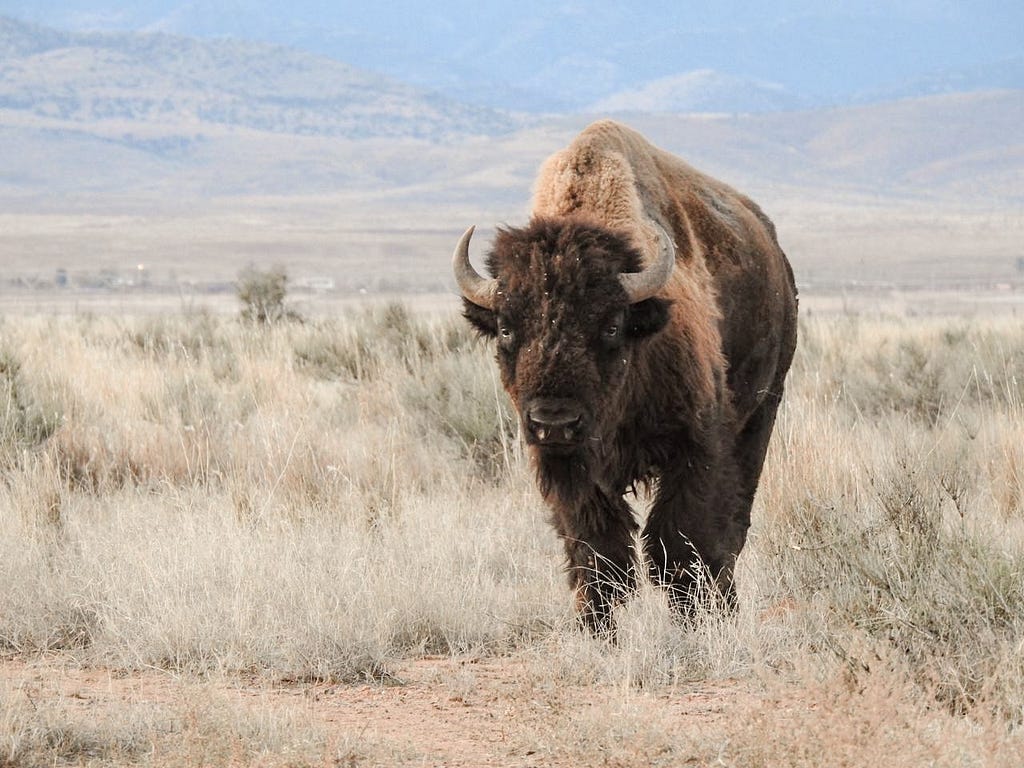
By Alexa J. Firmenich
This is a tale about a Mexican herd of wild bison. It is a story of bravery, resilience, renewal and hope. It is also about understanding one of the critical solutions to the Sustainable Development Goals that often is overlooked and therefore lies in nascent potential. To engage in any real conversation about Mexico’s bison, you must also be fluent in speaking about vanishing prairie dogs, ancient lake beds, endless golden prairies, cowboys and, most importantly, how to vaccinate an 800-kilo bovine without getting hurt. We can begin our tale with the lake bed.
The El Uno Ranch
Three hours southwest of the infamous border city of Ciudad Juarez — deep within the Janos Biosphere Reserve — lies a ranch called El Uno. Its name is derived from a cartographical reference, Polygon One, the shape harking back to a time when these grasslands extended to almost half a million acres. The land here is vast, a flat expanse of dry sandy cliffs and different grasses turned ashen, silver, ivory and chalk. El Uno’s geography lies in a critical biological corridor connecting Canada, the United States’ Great Plains and the Mexican Northern Altiplano. A diverse happy family of burrowing owls, golden eagles, coyotes, turtles, rattlesnakes, bighorn sheep, pumas, raccoons and badgers call it home.
Behind the ranch and its token school bus camper van, the valley surface rises. In the distance, between the mountain ranges of the Sierra Madre Occidental, Sierra Enmedio and Sierra El Capulín, if you squint your eyes a little, you can make out a complex of low white buildings. I inquired as to what they were. With a discerning shake of his head, Rodrigo Sierra, a Mexican scientist turned cowboy and now the ranch’s scientific advisor, says to me, “Those are the Mennonites.”
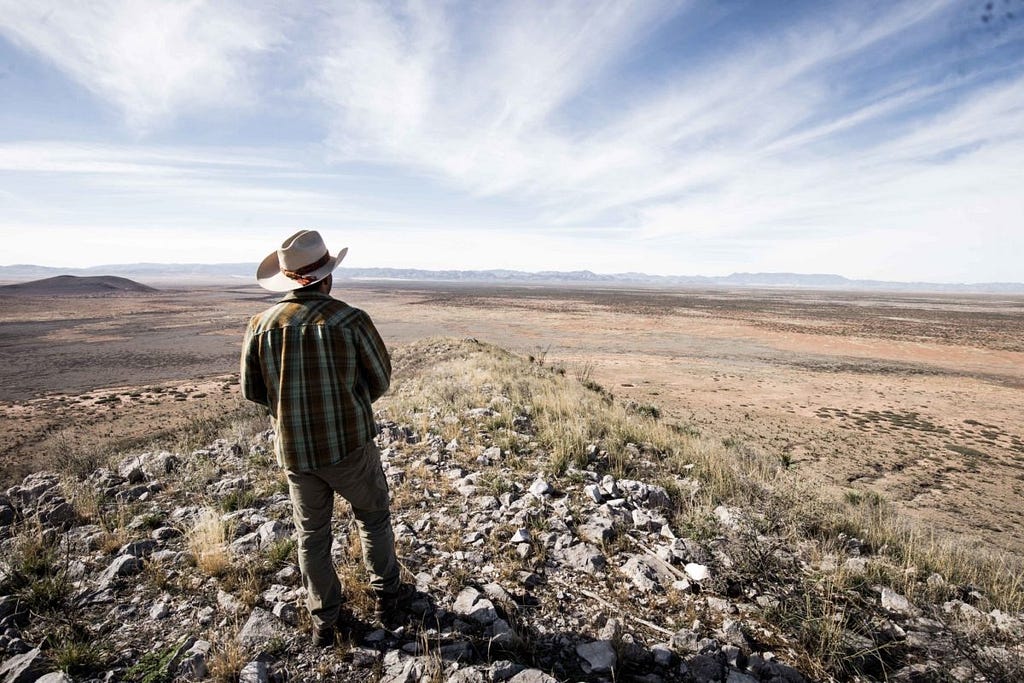
Over the next few days, I learned about the problems of water scarcity in the region and how some members of the Mennonite population — having emigrated from Canada in the early 1900s — had irrigated fields of cotton plants and other mechanized cultivars unsuited for a desert environment, sapping the water supply.
Is your business looking for ideas on making a positive environmental impact?Check this free online report from B Lab that compiles articles and resources to help your business become a climate leader. Whether you work at a large company or an agency, get inspired to do more today.
Deterioration of Life on Land
The intelligent and holistic management to reverse desertification of our planet’s grasslands is a critical issue. Two-thirds of the world’s surface is turning into desert, and degraded soils are releasing massive amounts of carbon into the atmosphere. The lack of plant root systems means that entire swathes of potential lands lie barren, unable to capture rainwater or sustain any form of life. This results in widespread poverty as well as in the degradation of billion of hectares of rangeland and cropland.
According to the UN, about a fifth of the Earth’s land surface covered by vegetation showed persistent and declining trends in productivity from 1999 to 2013, threatening the livelihoods of over 1 billion people. Up to 24 million square kilometers of land were affected, with almost half being grasslands and rangelands.
The Sustainable Development Goal 15 of the 2030 Agenda aims to “protect, restore and promote sustainable use of terrestrial ecosystems, sustainably manage forests, combat desertification, and halt and reverse land degradation and halt biodiversity loss.” Desertification affects as much as one-sixth of the world’s population, 70 percent of all drylands and a quarter of the world’s total land area. Hence, we need to find regenerative and effective solutions to desertification as soon as possible.
I was accompanying the Mexican Fund for the Conservation of Nature (FMCN), a conservation nonprofit, up north to learn about a first-of-its kind regenerative ranching project. The FMCN seeks to transform El Uno — a recent gift from The Nature Conservancy — into a center of excellence for regenerative ranching and rangeland conservation, helping to bring back the grasslands and support sustainable rural development in the region. Indeed, regeneration was the word on everybody’s lips during our stay at El Uno. Funded by various blended finance investments, the project will restore both the original prairie lands as well as the livelihood of cattle ranchers.
These blended finance projects meet the Target 15.A of SDG 15, which is to “mobilize and significantly increase financial resources from all sources to conserve and sustainably use biodiversity and ecosystems.” There is great potential in diverting funds toward holistic land use.
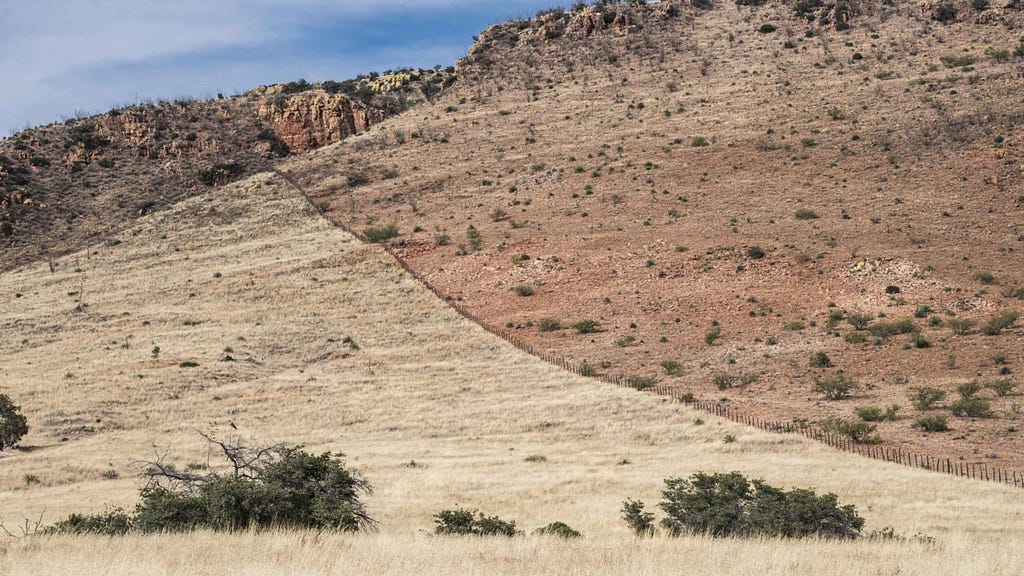
Reversing Degradation and Restoring Life
We are now learning that one of the most efficient ways of capturing carbon is to regenerate the world’s grasslands and safely put carbon back into the soil. This is being done in unison with regenerative ranching principles.
Working alongside nature’s astounding capacity for self-renewal, we can bring ecosystems back to life—forests, streams and pastures—to the benefit of the millions of people who depend on them for survival.
In the Horn of Africa, for example, pastoralists are beginning to plan their herds’ grazing to mimic nature and openly say it is the only hope they have of saving their families and their culture. The implicitness in this approach is an understanding that SDG 15 can only be met through the empowerment of the local people and stakeholders — including rural women, indigenous peoples, small holder farmers — and the education of future generations. This is exactly El Uno’s approach.
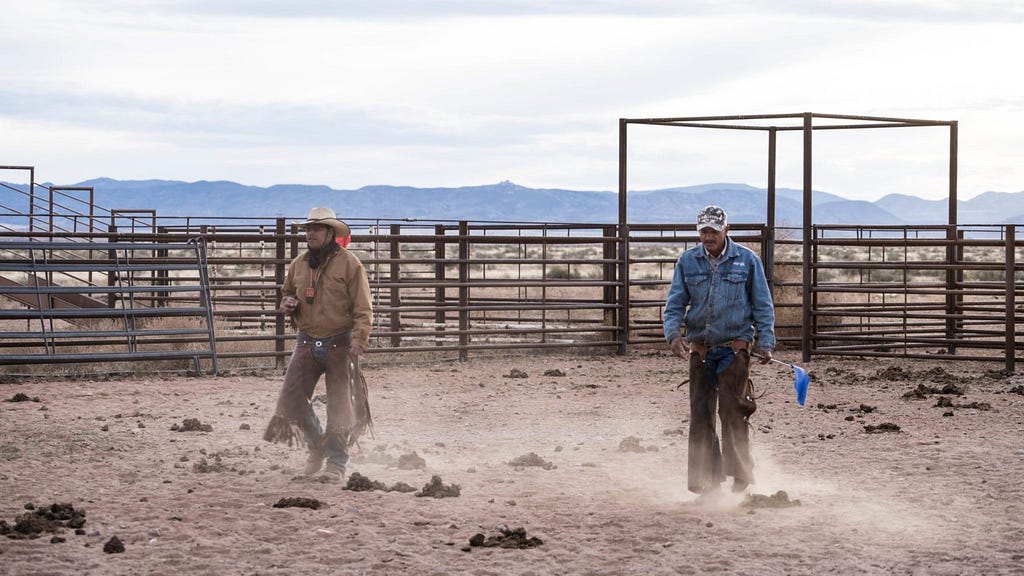
If successful, El Uno will become a beacon of hope symbolizing a much larger paradigm shift, an acupuncture point that can be replicated throughout millions of northern Mexican ranches that lie in dormant potential.
Our car stops suddenly as we are driving through the ranch’s winding dirt roads—prairie dogs have been spotted. Cameras and tripods emerge in a flurry. Little round heads and fluffy ears poke out like curious periscopes, pot-bellied, noses twitching, and then in a flash, the sentinels scurry back inside their underground lairs. These cute rodents are actually key players in the ecosystem and have historically been widely misunderstood. In the ’70s and ’80s, the majority of prairie dogs in the U.S. and northern Mexico were exterminated due to the false belief that they were pests. Research now shows that there is an intricately symbiotic relationship between the rodents, the bison, the water cycle and the health of prairie lands. Fortunately, at El Uno, the prairie dogs have returned.
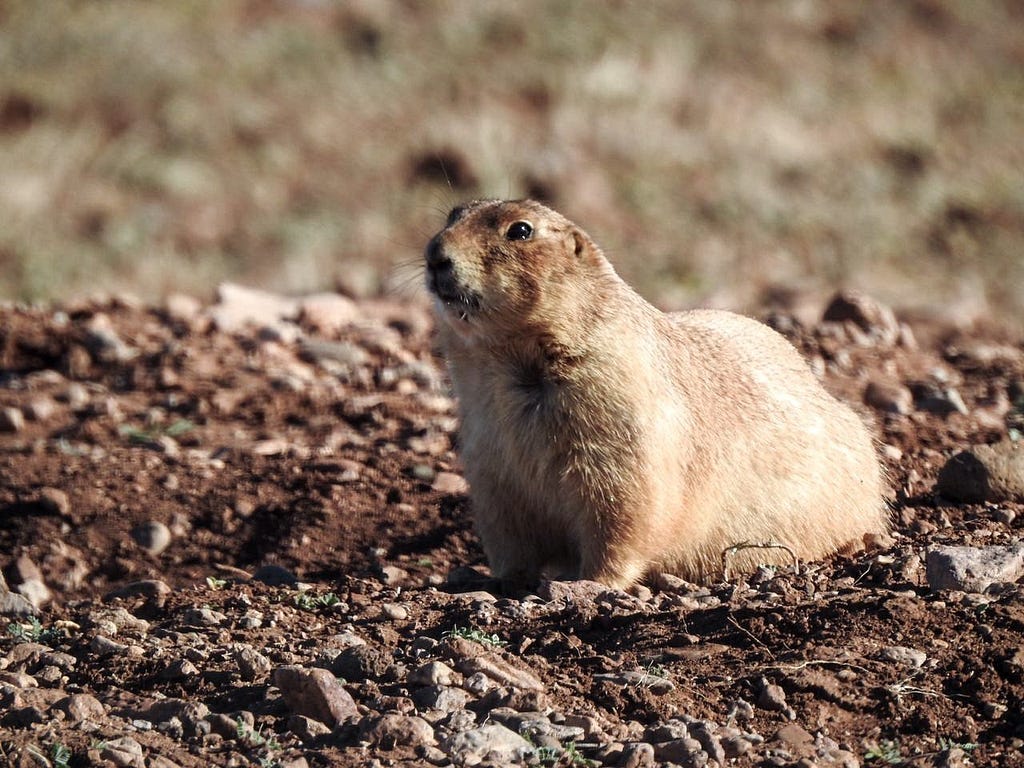
It is precisely this mindset of discerning system mapping that sets El Uno apart. The project’s habitat restoration scheme, which involves the bison being strategically guided through the land following their ancestral grazing patterns, will provide environmental services at scale, restoring soil fertility as well as nutrient, energy and water cycles. The local ranchers have begun grouping together in a knowledge exchange network (their WhatsApp group has already reached the 256-participant limit) with the intention of sharing their best practices.
Creative ideas abound. Enrique, the FMCN’s field operations officer, shared his moonshot idea of gathering sheared, thick bison fur and weaving it into carpets through a cooperative of abuelas tejedoras from Oaxaca who have made their way up north and live near Ciudad Juarez.
The Bison and Their Development
I learned that it is quite one thing to understand these concepts theoretically, and altogether quite another thing when you find yourself in the midst of it all, immersed in the Chihuahuan desert chasing bison in a cloud of dust behind cowboys. I was there at the one time a year known as the “corrida” when the ranchers gather the nomadic herds for vaccinations and measurement. It seems that even a bison cannot escape his annual check-up.
To behold a bison up close is a pretty awe-inspiring sight. A mass of pure muscle, beady-eyed and largely hoofed, with dense coats of fur that taper out toward their nether regions, bison can weigh up to 800 kilos. Your body can just feel that they are damn powerful. They roam in herds, slowly grazing away at thin grass. Be warned — this deceptively docile creature can shift in the blink of an eye into a galloping beast, as I learned one morning while out on a sunrise run.
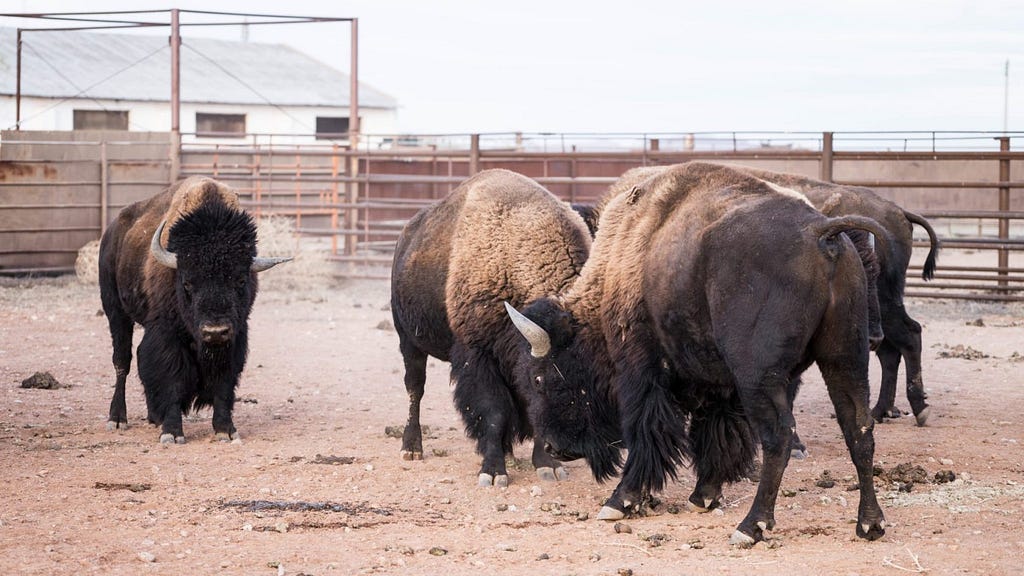
The bison have increased in number from a mere 23 to today’s 186. As they traverse the landscape, their rich dung fertilizes the barren prairies and their hooves trample and pack the soil, regenerating the grasslands in the process. The industry term for this is “holistic management and planned grazing,” and this practice is increasingly being applied around the world by organizations such as the Savory Institute. Allan Savory describes how properly managed livestock are the “missing tool” in the combat against climate collapse.
The soils, plants and animals evolved together as whole biological communities, with the norm for millions of years being routine physical disturbance of massive herds of grazing animals.
Jan Smuts, who gave us the theory of holism, had this to say: “In general, I may say that people do not realize the importance of grasses for human life. We literally live on grasses. All the important cereals, which sustain human life, such as wheat, rice, maize, are grasses. … Meat also, through animals, is a product of grasses.
“Directly and indirectly, therefore, all life is grass. … And when we consider how small this globe is, and how rapidly the human race is expanding and over-occupying it, we begin to realize to what an extent the whole future of the human race on this globe is dependent on the progress we make in the development of our grass resources.”
In front of me, the cowboys were beginning to herd the bison in an entirely new way on horseback, like a scene straight out of a Wild West classic. They would group them slowly into a solid mass and start to gently lead them toward the paddock. Just as they would close in, one disobedient bison would decide to take off and bolt across the fields, and sure enough, the rest would follow this enterprising individual like an opened dam let loose, until the herd had dispersed and the cowboys would have to start again. Many of them were neighboring ranchers who had volunteered their time and solidarity to the endeavor, and I was in utter admiration, as it was clear that this process was going to take a long time.
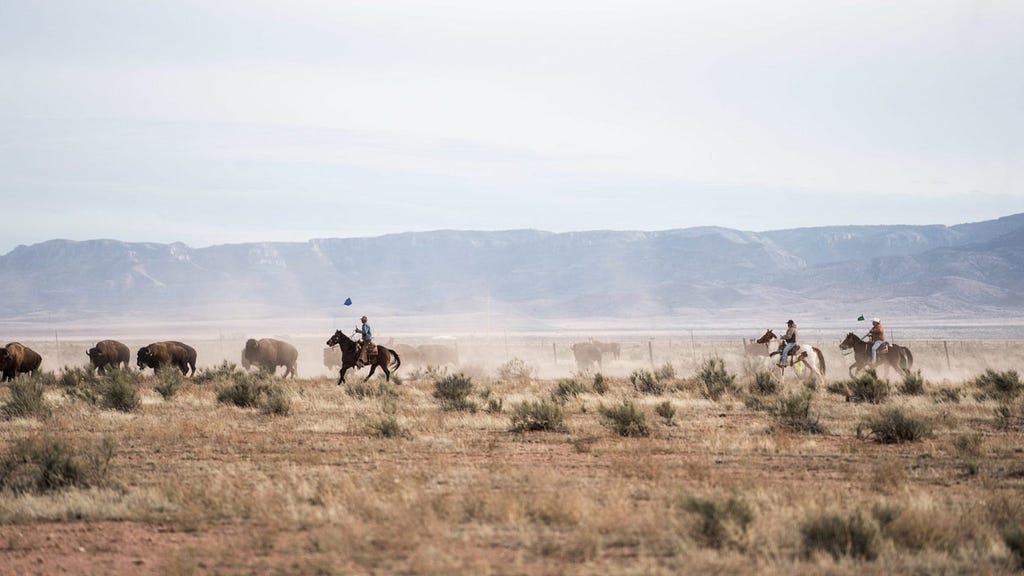
“The manner in which we conduct the corrida is much more important than the end goal. Our aim is not to round up the bison as quickly as possible, but to develop a new mutual relationship and encourage behavior change toward a more respectful relationship between man and bovine,” explains Lorenzo J. de Rosenzweig, the director of FMCN. If it was going to take them three weeks, then so be it. What a contrast, I mused, between this approach and our often short-term, outcome-focused approach to life.
What I experienced during my stay at El Uno, and what the statistics and project reports might not always portray, is that the transition to a regenerative stewardship of land and the accomplishment of the SDGs is a brave path, one that requires not only a significant sum of initial capital but also infinite amounts of patience and practice, determination, cooperation and faith.
You learn every day bit by bit, by doing, observing, reading the land, making mistakes, sensing and responding. Questions of course remain as to how to handle law-breaking neighbors and the future of livestock ranching, but as we ended our time under the full moon, with a ceremonial fire burning bright between us, a deep sense of pride and purpose was palpable. As intentions were uttered into licking flames, it felt like the land was listening, grateful for mankind’s renewed respect and the start of healing.
Alexa J. Firmenich is co-founder of Atlas Unbound. This article previously was published by Impakter.
B the Change gathers and shares the voices from within the movement of people using business as a force for good and the community of Certified B Corporations. The opinions expressed do not necessarily reflect those of the nonprofit B Lab.

Of Bison and Cowboys: Regenerative Ranching and Holistic Land Management in Northern Mexico was originally published in B the Change on Medium, where people are continuing the conversation by highlighting and responding to this story.